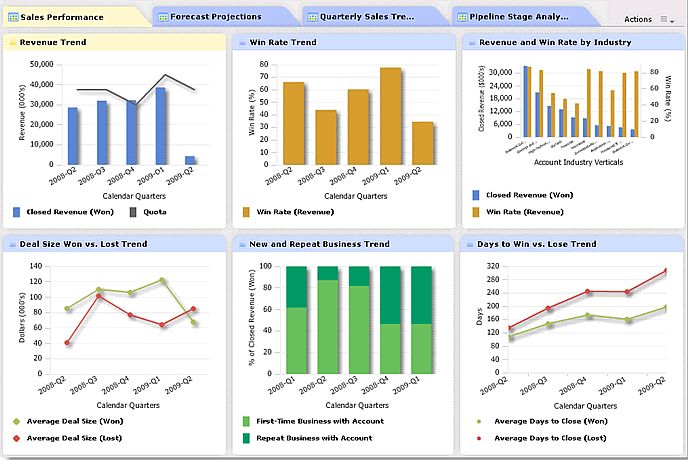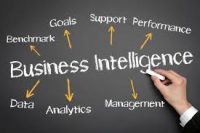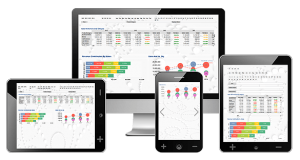The quality of our decisions, and the results we get therefrom, are dependent on a few factors as follows:
- The quality and quantity of information that we have at our disposal,
- Our abilities to intelligently process the information available and make decisions based on that,
- The environmental response to our the decisions.
The third factor is not entirely within our control. However, the first and second factors are to a large extent within our control. How, therefore, does the small and medium business entrepreneur obtain and process the information they need to enable them make effective decisions that will deliver the required business results?
1) What is Business Intelligence? Business Intelligence (‘BI’) refers to broad scope of software verticals that enables your business establish trends from disparate sets of data, thereby providing you with key information (read ‘intelligence’) that you can use to make informed decisions. BI tools enables organisations to collate, monitor and process data, thereby generating business insights necessary for making smarter and better decisions that drive results positively. Large corporations collate and analyse massive amount of business data to enable them understand their operating business environment sufficiently enough to make informed decisions. They also make use of the results to try to understand and make predictions about future trends. Business intelligence is therefore simply the capacity to turn (massive) data into neat and sensible information for business decision making.
Until recently, BI capability was very expensive and even difficult for most small and medium enterprises to consider. In addition to the cost of procurement and implementation of BI systems, small and medium enterprises (‘SMEs’) will also need the expertise to interprete and apply the results. Yet, this capability is, to some extent at least, even more required by the SMEs. This is for the simple reason that a larger corporation can more easily bear the consequences of bad decisions and make corrections to wrong decisions, that can just wipe out an SME.
The emergence of, and developments in ‘cloud computing’, open source, visualization technologies etc., now make it easier and cheaper for the SME to access BI capability and enjoy their attendant benefits. Over the last few years, the BI market has actually pivoted to accommodate the needs of SMEs by lowering the financial investment requirements as well as eliminating the need for in-house data experts.
2) Benefits of BI Systems: As mentioned earlier, the primary benefit of an effective BI system is to enable you make informed decisions on various key aspects of your business. A typical BI system will, without any manual computations, enable you:
- Make sense of your massive business data and process it into easily interpretable results,
- Intelligently forecast upcoming key business indicators like sales revenue,
- Analyse your operational efficiency,
- Identify highest yielding customers, highest revenue generating regions, etc.,
- Focus on business objectives instead of getting unwittingly overwhelmed by the ‘noise’,
- Ability to recongise and respond quickly to emerging opportunities,
- Enhance your competitive capacity.
3) How to Selecting a BI System for your business: In selecting an appropriate BI system for your organisation, the challenge is for you and your team to decide on the following:
- Ensure the availability of relevant and reliable or at least quite reasonable (acceptable) data,
- Understand exactly what your requirements and objectives are, i.e. what questions do you wish to have answered?
- Identify what success factors derive your corporate decision making process,
- Review the various options (of BI systems) available,
- Match the options available with your requirements, resurces and constraints.
Seek expert advise: Given the, literally unlimited options available, it is important to work with an expert and go through your requirements to ensure you get the best system possible.
There are many types of BI tools, from analytics and big data statistics to reporting tools and dashboards that offer you ‘at-a-glance’ information across indicators. When selecting a BI system:
- Involve your team: Adopting and implementing a BI system is a major issue even with large corporations. You should therefore involve your staff from across functions and from various levels. Empower all those involved to make the most professional and sincere input. The right attitude must be encouraged in the process. This is necessary if you are to succeed in deriving the benefits of the system.
- Connect the data: As mentioned above, it is necessary to first identify the various sources of all you data, from tools to databases, that your company has or has legal access to. Everything must be pulled together to help you get a meaningful picture of how your business is currently performing. Next, you should establish what additional data you need to also pull in so that you can have more reliable results.
 Right capability: Consider selecting tools that allow you to visualize and analyze relevant data. Above, from Business Cubic, shows a dashboard indicating a number of variables. It should also be able to combine, eliminate and customize data to generate the information you require that will help you better understand what drives your business. The ultimate objective is to be able to make fact-based and insightful decisions that will improve your corporate performance.
Right capability: Consider selecting tools that allow you to visualize and analyze relevant data. Above, from Business Cubic, shows a dashboard indicating a number of variables. It should also be able to combine, eliminate and customize data to generate the information you require that will help you better understand what drives your business. The ultimate objective is to be able to make fact-based and insightful decisions that will improve your corporate performance.
- Start small: A common problem when implementing BI system for the first time is to consider a relatively expensive system notwithstanding exactly what the benefits to you are. Another problem is also becoming bogged down by trying to track everything under the sun. Instead, you should identify and stick to variables that are relevant to your business and are measurable. Approach and implelement the system gradually and in simple steps over a reasonable time. Do not take steps in leaps and bounds that will overwhelm you.
- Keep evolving: The implementation of a BI system should not be seen as a one time event. Start small but keep improving as you introduce more data into the analytical process. Surely and steadily, you will develop your confidence and improve on your analyses and decision making process.
4) What BI System? Even without understanding it, Excel is often the first ‘BI’ solution most SMEs utilise. It is affordable and available. However, it obviously is highly limited. More robust BI solutions have much more analytical capability and offer visualizations, thereby making it easier to bring out the required information necessary for decision making. To go a notch higher therefore, you team could review options such as Microsoft’s PowerPivot which does much more than Excel. Others systems include JDEdwards, Hitachi’s Pentaho, BIME, DBxtra, Sisense, NetSuite, Microsoft Dynamics, Intuit QuickBooks etc. Whatever system you consider deploying, you should ensure that the it does you settle for does not lock you into a ‘strait-jacketed’ way of looking at your data only. It should also make it easy to export the data into a data warehouse for further processing and utilisation elsewhere. This is again important so that you can integrate all your data down the road when you want to further enhance your capability. In addition, whatever system you decide to adopt, ensure that a mobile platform is offered by your vendor if your workforce are mobile and make require information on the go.
It is very important for an entrepreneur to appreciate the good use to which a BI system could be put to. Assess your requirements and buy what meets them at good value. At the end of the day, business is all about making many decisions on a daily basis. Obviously, a number of decisions will be made intuitively. However, a vast majority of decisions must be made intelligently and backed by hard and raw data. This is where a good BI system will help you by significantly improving your chances of success.
















